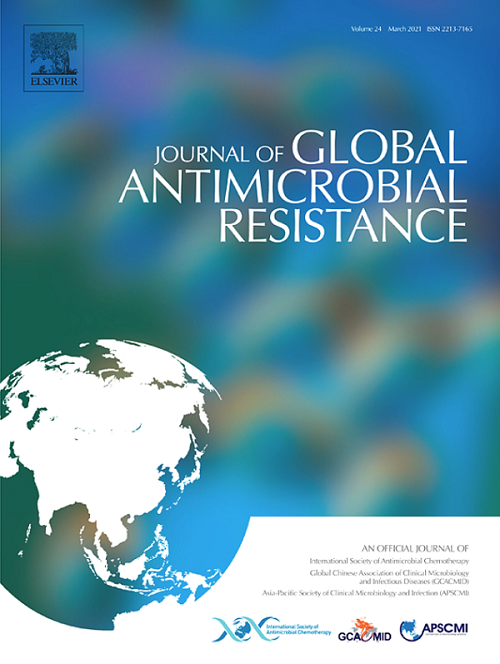中国上海出现了携带 T4SS-type-ICE 的 emm28 化脓性链球菌,导致侵袭性感染。
IF 3.7
3区 医学
Q2 INFECTIOUS DISEASES
引用次数: 0
摘要
目的:侵袭性A组链球菌(iGAS)感染在欧洲、澳大利亚和美国呈上升趋势,但来自中国的数据却很少。本研究旨在提供本地数据,以反映中国 iGAS 感染的特点:方法:对中国上海一家三甲医院2014-2023年间iGAS感染的临床数据进行了回顾性分析。结果:2014-2023年期间,上海某三级甲等医院共发生iGAS感染1例:2014-2023年间,共发现21例iGAS病例,其中软组织感染占61.9%(13/21),对红霉素和克林霉素均耐药的分离株占85.7%(18/21)。对 2023 年的 3 个 iGAS 分离物进行了基因组测序,结果显示其中 2 个为 emm12,1 个为 emm28。系统进化分析表明,两个emm12分离株被归入支系II,与中国猩红热致病分离株关系密切。emm28分离株被归入SC1A亚支系,并发现其具有新型ICE(命名为ICE-SHemm28;Tn916-like),携带ermB基因和IV型分泌系统(T4SS):结论:在上海的侵袭性感染中发现了携带新型大环内酯耐药T4SS型ICE的emm28 iGAS菌株。本文章由计算机程序翻译,如有差异,请以英文原文为准。
Emergence of T4SS-type-ICE-carrying emm28 Streptococcus pyogenes causing invasive infection in Shanghai, China
Objective
Invasive group A streptococcal (iGAS) infections have been increasing in Europe, Australia, and the USA, but few data from China are available. This study intended to provide local data to highlight the characteristics of iGAS infections in China.
Methods
A retrospective analysis was performed on clinical iGAS infection data from 2014 to 2023 in a tertiary hospital in Shanghai, China. Genomic analysis was conducted to characterize antimicrobial resistance, virulence, prophages, and integrative and conjugative elements (ICEs), as well as phylogenetic clusters.
Results
From 2014 to 2023, a total of 21 iGAS cases were discovered, with soft tissue infections accounting for 61.9% (13/21) and 85.7% (18/21) of isolates resistant to erythromycin and clindamycin, respectively. Three iGAS isolates from 2023 underwent genome sequencing, which indicated that two isolates were emm12 and one was emm28. Phylogenetic analysis showed that the two emm12 isolates were assigned to clade II and closely related to Chinese scarlet fever-causing isolates. The emm28 isolate was assigned to subclades of SC1A and discovered to possess a novel ICE (designated as ICE-SHemm28; Tn916-like) that carried both the ermB gene and the type IV secretion system.
Conclusions
Emergence of an emm28 iGAS strain harboring a novel macrolide resistance-carrying type IV secretion system ICE was identified in invasive infections in Shanghai.
求助全文
通过发布文献求助,成功后即可免费获取论文全文。
去求助
来源期刊

Journal of global antimicrobial resistance
INFECTIOUS DISEASES-PHARMACOLOGY & PHARMACY
CiteScore
8.70
自引率
2.20%
发文量
285
审稿时长
34 weeks
期刊介绍:
The Journal of Global Antimicrobial Resistance (JGAR) is a quarterly online journal run by an international Editorial Board that focuses on the global spread of antibiotic-resistant microbes.
JGAR is a dedicated journal for all professionals working in research, health care, the environment and animal infection control, aiming to track the resistance threat worldwide and provides a single voice devoted to antimicrobial resistance (AMR).
Featuring peer-reviewed and up to date research articles, reviews, short notes and hot topics JGAR covers the key topics related to antibacterial, antiviral, antifungal and antiparasitic resistance.
 求助内容:
求助内容: 应助结果提醒方式:
应助结果提醒方式:


